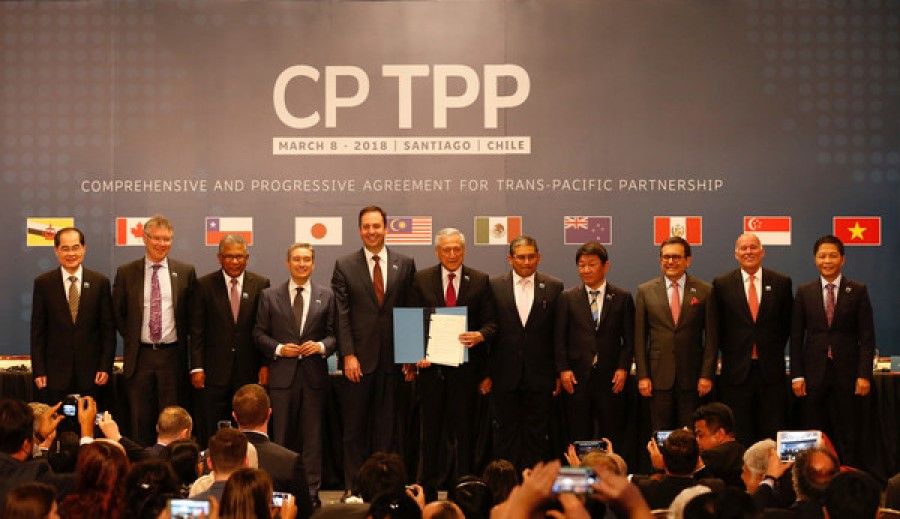How can China benefit from the CPTPP?

Recently, China has drawn global attention by unexpectedly formally applying to join the Comprehensive and Progressive Agreement for Trans-Pacific Partnership (CPTPP). Perhaps this move should not be seen as just a political stand, but as part of China's systematic strategy.
Looking at China's developmental needs, following 40 years of rapid growth, it is facing many challenges to maintain its growth trajectory. The key to breaking through the bottleneck is strengthening the systemic framework and building a rules-based climate of fair competition, so as to spur the dynamism of various market entities.
But it is not enough to push for changes to the system through China's domestic strength alone. China is now knee-deep in reforms with various stakeholders intertwined and a strong resistance to change, which makes it especially important to bring in external pressure to bring about domestic reform. The fact is, China has often used the need to adhere to international regulations to eliminate resistance to reform.

Reforms for entry into CPTPP in line with China's internal reforms
The CPTPP is a free trade agreement of the highest standard, reflecting the main characteristics of the market economy with strict requirements for intellectual property rights, competition policy, regulations for state-owned enterprises, labour, and climate protection. If China wants to become a developed market economy that can effectively participate in the global economy, reforms in these areas are necessary - or rather, the CPTPP's high standards are in line with China's aims of reform. Previously, China's participation in the World Trade Organization (WTO) improved its level of marketisation and adherence to international regulations. This time, China can also improve its market economy system through the CPTPP negotiations.
...any future hits by the US against China in terms of trade would also affect other members, which would increase the cost of the US starting a trade war.
Joining the CPTPP would also bring China political benefits by strengthening its positive image of protecting free trade. After former US president Donald Trump entered the White House in 2016, globalisation was reversed in a major way. The current Biden administration has refrained from making major trade policy changes as it is concerned that Trump might make a comeback. Thus, the globalisation of trade is left without a leader.
With the absence of the US, China has engaged in a series of global economic cooperation initiatives through the Belt and Road Initiative (BRI), the Regional Comprehensive Economic Partnership (RCEP), and the Comprehensive Agreement on Investment, to portray itself as an advocate of free trade. China's bid to join the CPTPP shows its continued resolve to open up.
If China does become a CPTPP member, it would be helpful in avoiding the US's trade sanctions, and any future hits by the US against China in terms of trade would also affect other members, which would increase the cost of the US starting a trade war.

Obstacles in the way
At present, there is still a long way to go for China's economic system to match up to the CPTPP's high standards. It will take time for China to level up step by step. However, domestic factors are not the only hindrance to China's membership. The US and its allies could also put a spanner in the works. While the US will probably not rejoin the agreement in the short term due to its domestic political divisions, it could increase the costs of China's membership through its allies in the CPTPP and delay China's entry for as long as possible.
Triggered by the mainland's CPTPP application, Taiwan also submitted its bid to enter the CPTPP a few days after the mainland, aggravating international political competition. In theory, Taiwan can apply to enter the CPTPP as a separate customs territory, and CPTPP member states who hold similar values would endorse Taiwan. But because the mainland is very wary of Taiwan's Democratic Progressive Party (DPP) harbouring hopes of independence, it would certainly strongly oppose Taiwan's application. This would make it even more difficult for Taiwan to gain the unanimous support of all members of the CPTPP, not to mention the fact that it already has to deal with huge domestic dissent.
...following the US's withdrawal from the earlier Transpacific Partnership (TPP), the CPTPP is in need of another consumer market to replace the US, and China seems like the only alternative.
China's biggest trump card is its massive economic volume and huge consumer market, and any international free trade area would need a final consumer market to form a complete economic cycle among its members. In the past, the US played this role but following the US's withdrawal from the earlier Transpacific Partnership (TPP), the CPTPP is in need of another consumer market to replace the US, and China seems like the only alternative.

China has already joined the RCEP, which covers nearly a third of the global economy. But member states of the RCEP are mainly distributed on the west coast of the Pacific Ocean - if China gains membership into the CPTPP, it would also gain access to the east coast of the Pacific Ocean. With its economic size, China can play a key role in the economic integration of the Pacific Rim and promote the formation of a super large-scale free trade area. This is a huge boon for the entire Asia-Pacific region.
Moreover, among the various free trade areas, the CPTPP focuses more on the trade in services, however, this still needs to be built on the firm foundation of manufacturing. China is the world's largest manufacturing country with the most complete manufacturing industrial chain. China's manufacturing industry can form a complementary relationship with CPTPP members' strong services sectors and provide developed countries with a bigger high-end services market.
